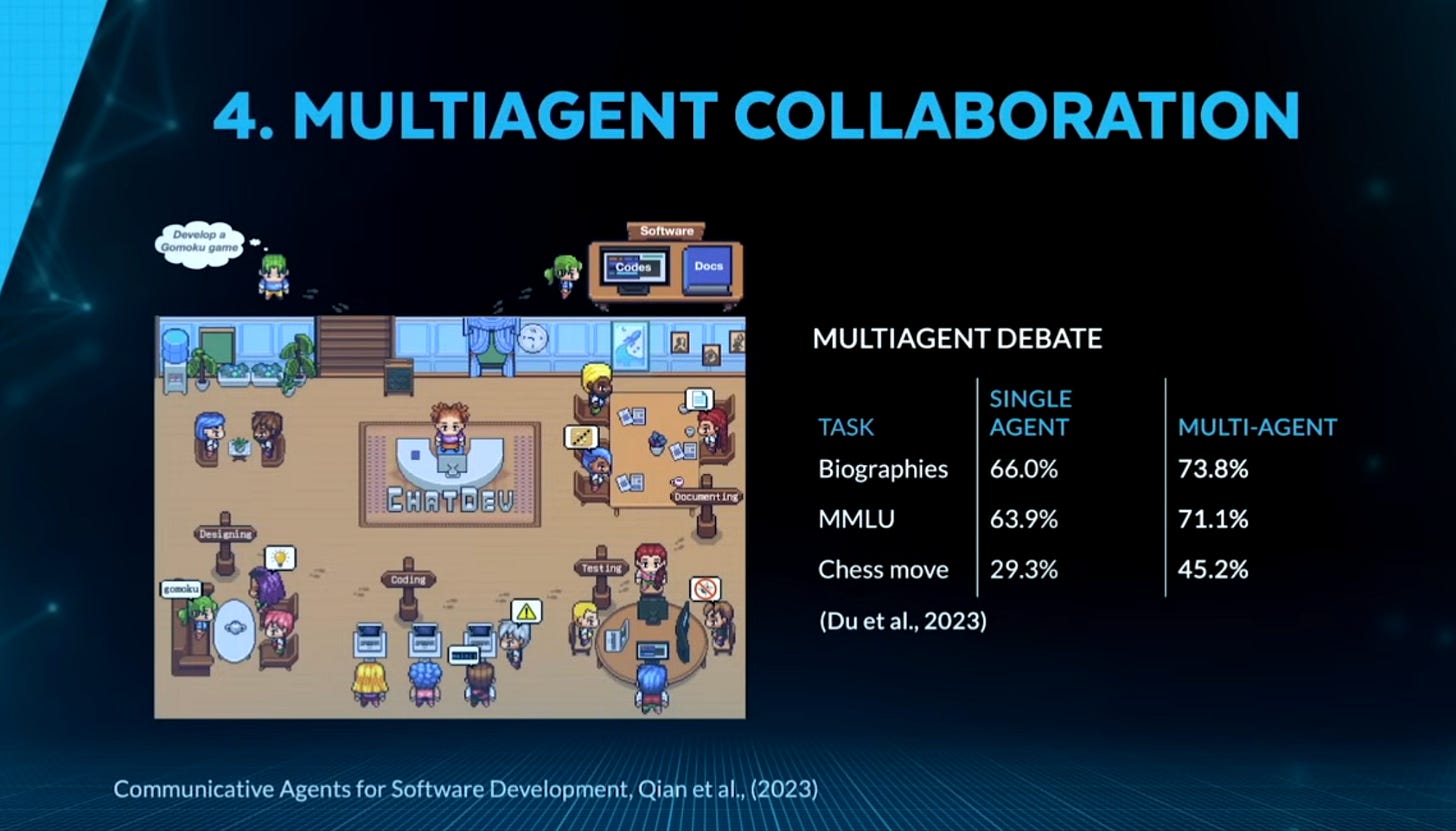4 Agentic Design Patterns and 4 Key AI Trends 2024-2025
Insights from Andrew Ng at the recent Snowflake Build 2024
Andrew Ng, our beloved machine learning professor and now a prominent figure in the AI community, just delivered a keynote address at Snowflake's BUILD 2024 conference, where he shared his insights on the current state and future prospects of artificial intelligence. He began by reiterating his well-known analogy of AI as "the new electricity," emphasizing its nature as a general-purpose technology with wide-ranging applications across various industries.
The AI Stack: Where Opportunities Abound
Ng presented his view of the AI stack, consisting of layers from semiconductors at the bottom to cloud infrastructure, foundation models, and finally, applications at the top. While much of the media hype has focused on the lower layers, particularly around technologies like generative AI foundation models, Ng argues that the real opportunities lie in the application layer. This is where he believes the most value and revenue will be generated, as innovative AI applications are developed to solve real-world problems.

Accelerating Machine Learning Development
One of the most significant trends Ng highlighted is the rapid acceleration of machine learning model development, largely thanks to generative AI. What once took skilled AI teams 6-12 months to build can now potentially be prototyped in a matter of days. This shift is enabling faster experimentation and iteration, leading to new paths for invention and innovation.
However, this speed comes with its own challenges. Ng pointed out that evaluations (or "evals") are becoming a bottleneck in the development process. The need for robust testing and validation is putting pressure on organizations to speed up these aspects of development to keep pace with the rapid prototyping capabilities now available.
The Rise of Agentic AI Workflows
The most exciting technical trend Ng discussed is the emergence of agentic AI workflows. He believes this approach to AI development holds the greatest potential for advancing the field.
Agentic AI moves beyond the limitations of traditional "zero-shot prompting" to create more sophisticated, multi-step processes that mimic human problem-solving approaches.
Ng outlined four major design patterns for agentic workflows:
Specifically,
Reflection: Where an AI critiques its own output and uses that feedback to improve.
Tool Use: Enabling AI to make API calls and interact with external tools and data sources.
Planning: Breaking down complex tasks into a sequence of smaller, manageable steps.
Multi-Agent Collaboration: Simulating multiple specialized agents working together to solve problems.
These patterns allow for the creation of more capable and flexible AI systems that can tackle increasingly complex tasks.
Visual AI: The Next Frontier
Ng was particularly excited about the potential of visual AI, powered by large multimodal models. He demonstrated how agentic workflows can be applied to image and video processing tasks, showcasing impressive capabilities such as counting players on a soccer field, identifying specific moments in video footage, and generating detailed metadata for video content.
These advancements in visual AI have significant implications for businesses with large repositories of image and video data. Ng suggests that many companies are sitting on valuable visual data that has been difficult to utilize until now. The new capabilities of visual AI agents could unlock tremendous value from these previously underutilized assets.
4 Key AI Trends to Watch
Keep reading with a 7-day free trial
Subscribe to The MLnotes Newsletter to keep reading this post and get 7 days of free access to the full post archives.







